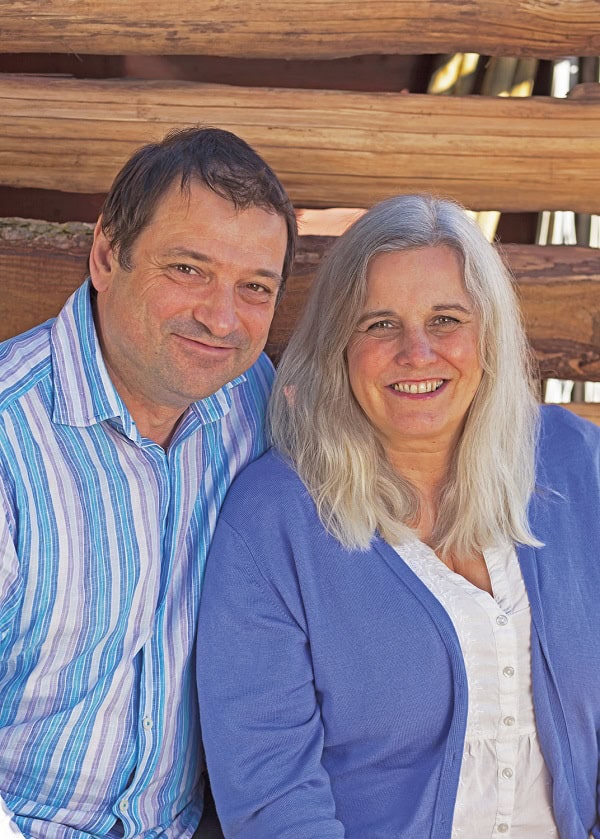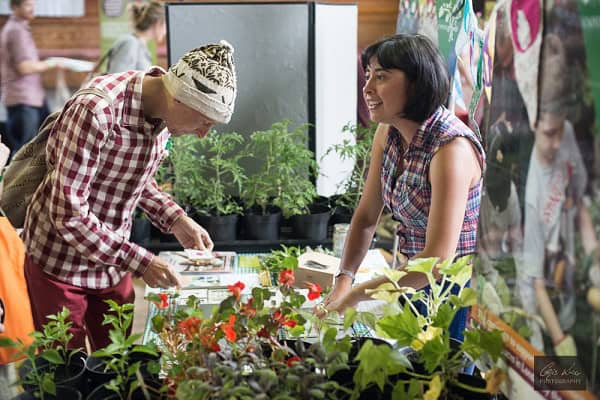In September 1992, Maddy and Tim Harland published the first issue of Permaculture magazine. On the publication’s 25th anniversary, we find out how far they – and the permaculture movement – have come
How did Permaculture magazine begin?
When Tim and I published the first issue of Permaculture magazine it had a tiny readership of 800 people, mainly Permaculture Association members, our national education charity and students of permaculture design courses, but we had a vision that permaculture could go mainstream and so we started supplying shops and other outlets from day one. Today we have about 100,000 readers, are found in shops all over the world, and even have a North American specific edition of the magazine.
What changes have you seen in the movement since you started the magazine?
Back in 1992, permaculture in Britain was a very alternative scene. Yet to come was the understanding of low impact development in English and Welsh planning law thanks to people like [woodsman, coppicer and natural eco-builder] Ben Law and Tony Wrench [author of Building a Low Impact Roundhouse] respectively. Internationally, permaculture people were found in pockets all over the world, but there were only a few charitable foundations and a limited network.
The magazine and movement that’s changing the news for good.
Join as a Positive News subscriber
Over the years we have seen permaculture activists working in disaster areas, such as Haiti after the earthquakes, building sanitation systems and providing clean water. Permaculture has become part of the national curriculum in East Timor and a recognised approach to sustainable agriculture, good nutrition and regenerative land management in Malawi. It has become a tool for teaching agriculture and horticulture and training for refugees from Afghanistan and the Middle East. It forms the basis of Gaia Education’s ‘ecological key’, endorsed by The United Nations Institute for Training and Research, and UNESCO.
At the last inter-governmental climate talks in 2016, Baroness Patricia Scotland, the secretary-general of the Commonwealth, referred to permaculture as one of the key approaches to regenerative development to reverse (not just adapt to) climate change. Permaculture is emerging from the alternative fringe to take its place within a portfolio of holistic design solutions.

Tim and Maddy Harland established Permaculture magazine in 1992. Photo: Gail Harland
What has been most challenging about 25 years in publishing, and of what are you most proud?
The most challenging thing is publishing a magazine that is fundamentally opposed to unconscious consumerism. As you know so well at Positive News, we need to sell a certain number of magazines to survive and it is not possible to play the conventional commercial game to get those sales (by corporate advertising sales for yet more consumer disposable products). We rely on our readers’ discrimination and the magnetism of good news, positive, practical, tested solutions and a vision of the future that is regenerative, not degenerative.
Tim and I both love the passion, intelligence, generosity and inventiveness of our writers, advertisers and readers. We love the small team we work with who work so hard on the magazine’s growth and development. We love the emerging vision of the future, a mosaic of many people’s understanding and insights. We can almost hear this future breathing, to use the words of author Arundhati Roy.
Tim and I are proud to be producing a book, Fertile Edges: regenerating land, culture and hope to celebrate our 25 years in print. It is a collection of my editorials over this time contextualised by world events, permaculture happenings and personal biography. We are proud because this collection demonstrates how cutting-edge the permaculture movement has always been and this collection gathers together in one volume so many beautiful ideas, stories and practices that have inspired us both and our readers over the last quarter century.
Why is permaculture particularly relevant now?
The permaculture movement is all about its people. We have specialists in regenerative agriculture who can transform barren lands in all climates. We have people working with refugees teaching skills that will create greater self-reliance and help heal some of the terrible wounds of exile. We have urban permaculturists working with people who feel left behind, people working in developing countries transforming food security, teachers pushing the edges of people care and helping groups to work more effectively together. We have people working on cultural emergence, finding the patterns that will allow new ideas to coalesce and be developed.
Permaculture is a holistic design system based on natural principles. These can be used in so many different contexts. Perhaps the most interesting one to emerge will be a planetary permaculture design using all the tools and strategies we know are effective to lock up carbon in the soil and biomass and reverse climate change. The science says it is possible (read Paul Hawkins’ book, Drawdown). What is required is a deepening sense of urgency coupled with a political understanding that such a design will be regenerative – it will provide food, energy and wellbeing – and not sap it from the system.
But it will also require a step change in the world. I’ll be speaking more of that on Sunday at the London Permaculture Festival.
We rely on the magnetism of good news, positive, practical, tested solutions and a vision of the future that is regenerative, not degenerative
Where do you see permaculture heading in the next 25 years?
I see permaculture becoming a key strategy in climate stabilisation. We need regenerative designers in all areas of life if we are to survive. Permaculture provides a framework to train the next generation in Earth repair. I would urge any young person to find their passion, educate themselves as best they can, and go out into the world with the intention to learn as much as they can for the benefit of their fellow beings, and not just the human ones.
Why are get-togethers such as this weekend’s London Permaculture Festival so important?
The London Permaculture Festival is a key event. It is always packed with great workshops and events so is a prime opportunity for learning new skills and being exposed to new ideas. It is wonderfully diverse – as London is – attended by people of all ages and cultures. Social inclusion is really important for me as it indicates the good health of an organisation or society, and social justice is the compassionate and intelligent way to live. It is also a celebration. There is nothing quite like meeting other social change activists.
We can all spend too much of our time feeling on the edge of society because we think differently and do not buy into the conventional narrative we are sold from birth. The festival is a chance to be with people of like minds, go urban foraging, make new friends, eat excellent food, and breathe in that positive, regenerative future world we all want to create.

The London Permaculture Festival. Image: Chris King
Maddy Harland is founder and editor of Permaculture magazine – practical solutions beyond sustainability. Her book, Fertile Edges: regenerating land, culture and hope will be published in September by Permanent Publications.
The London Permaculture Festival takes place at Cecil Sharp House in Camden, London, on Sunday, 30 July.
